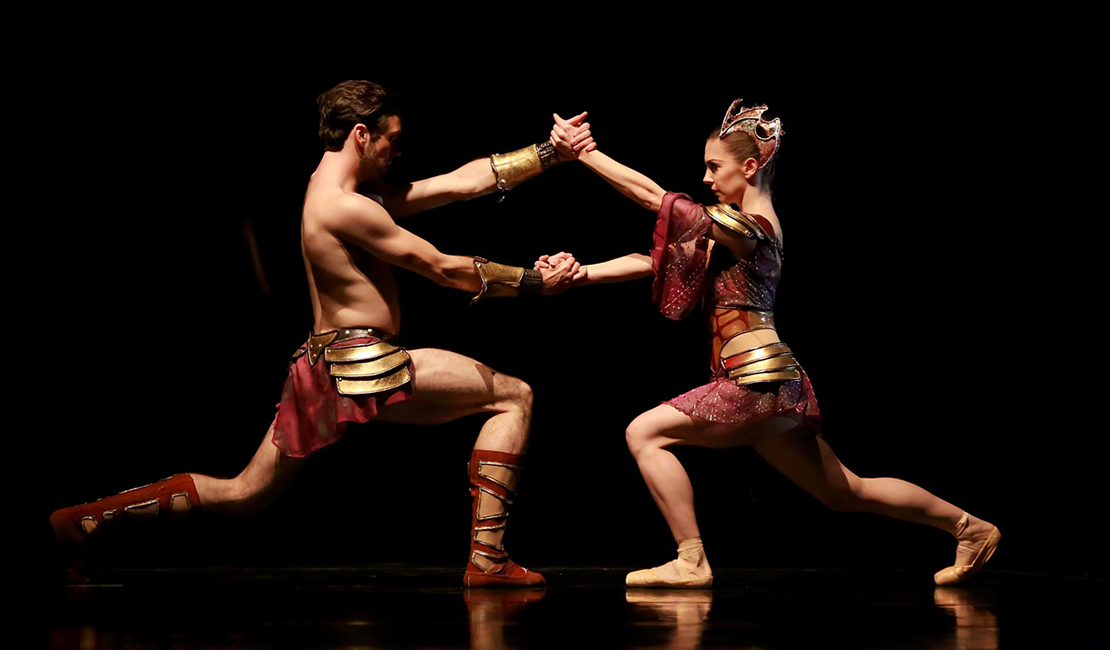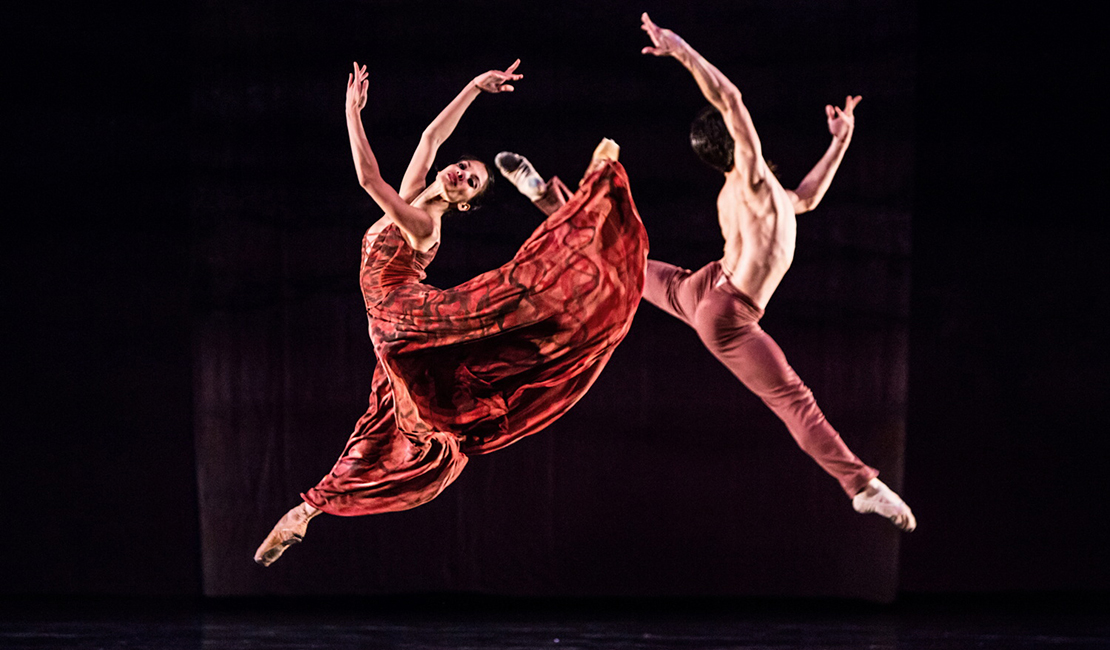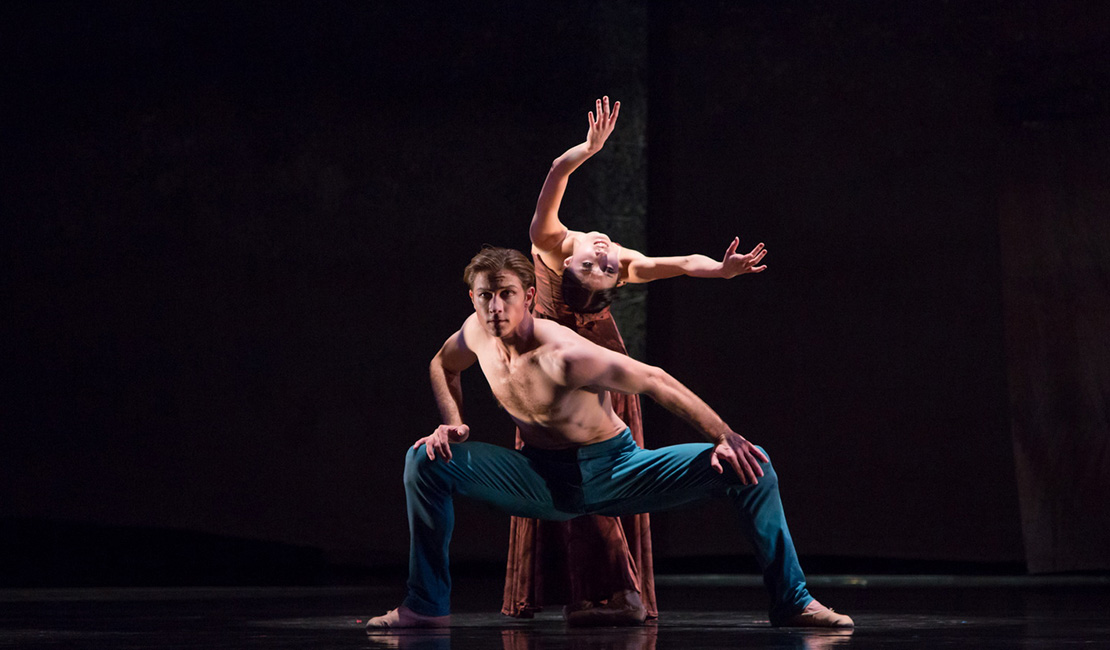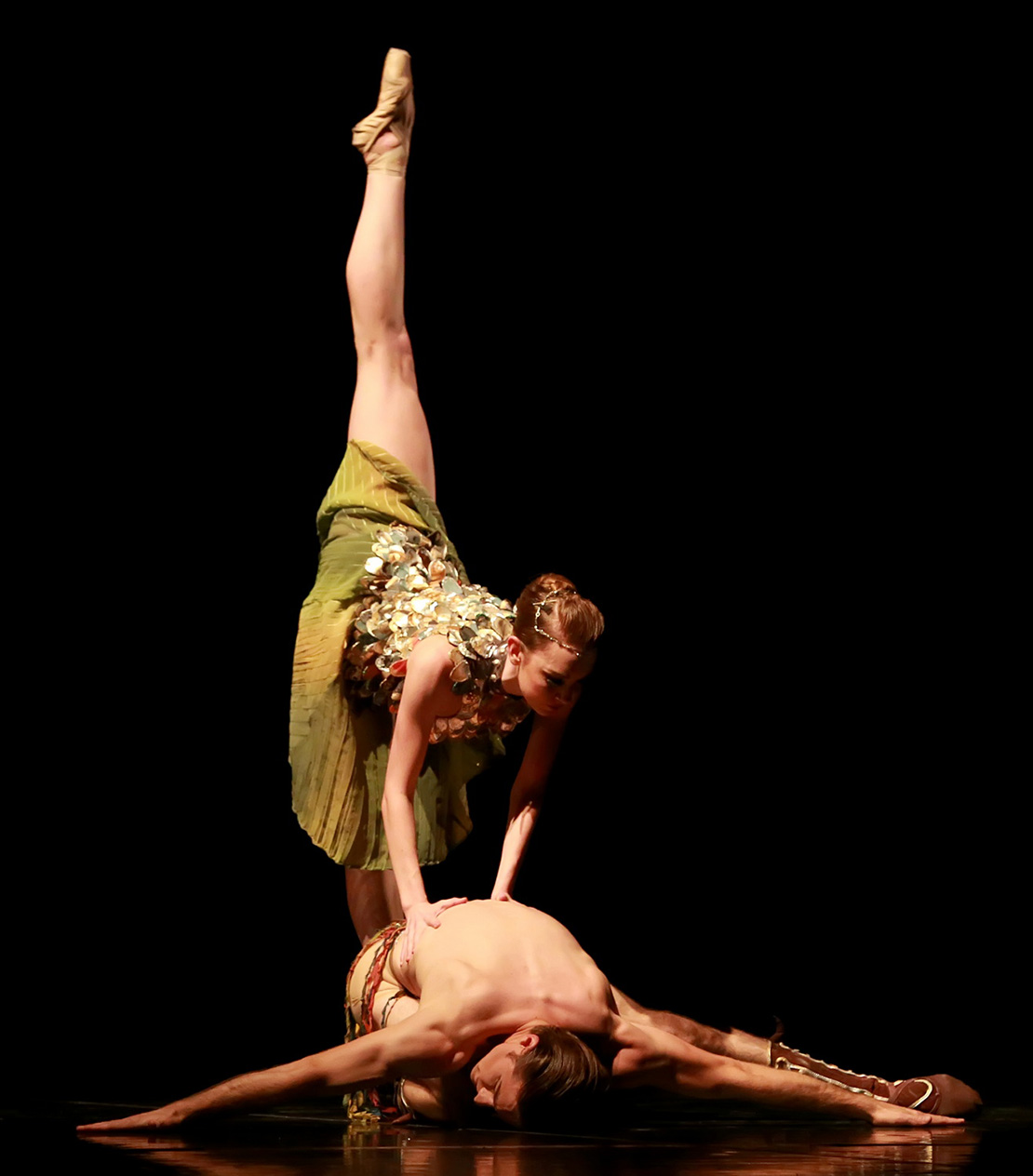Intrinsically Danceable: Ross Edwards

Originally composed for orchestras and ensembles, the music of Ross Edwards is frequently used in the context of dance – and for good reason.
Maninyas: Concerto for Violin and Orchestra started its life as an orchestral work, but it’s dance-qualities were recognised by San Francisco Ballet who used it for a very successful ballet season in 1996. Subsequently Houston Ballet took the work to Germany, adding it to its repertoire.
Choreographed by Stanton Welch, this ballet highlights Edwards’ dance-like rhythms to perfection.
“Maninyas has an exquisite duet in blue, with wild lifts and sudden swirling falls, highlighted in this beautifully crafted work.”
Dance Magazine
Other ballet companies have used Welch’s choreography of Maninyas, namely Singapore Dance Theatre (2005), Singapore Ballet (2011) and Joffrey Ballet Chicago (2015).
The distinctive style of the maninya (Edwards’ Australian dance-chant) is characterised by an abstraction of insect and bird sounds, lively tempi and rhythms, and angular pentatonic melodies often underpinned by complex drones. Referred to as the maninya style, these dance-like characteristics pervade much of Edwards’ music.
“Stanton Welch’s 1996 Maninyas set to Ross Edwards' volatile, stirring 1988 Maninyas Concerto for Violin and Orchestra is superb and superbly danced. Described as a small abstract work, this piece for five couples feels anything but: it’s huge. Intensely alive, filled with bravado, feeling and constant change.”
Laura Molzahn, Chicago Tribune

Houston Ballet Principal Karina González and former Principal Charles-Louis Yoshiyama in Stanton Welch's Maninyas
Photo by Amitava Sarkar (2014) - Courtesy of Houston Ballet
Following the success of Maninyas, Edwards was commissioned by Houston Ballet to write Zodiac Dances. A ballet in twelve movements based on the zodiacal signs, it was a triumph for composer, choreographer, and company.
The work musically describes the temperaments and attributes of all twelve of the astrological signs. It entered Houston Ballet’s repertoire alongside Maninyas. Edwards’ scoring enabled the flexibility for the choreographer to use ensemble and solo dancers to create a beautiful and highly effective result.
Chorale and Ecstatic Dance is another work that lends itself to be choreographed. Immediately attractive to audiences, the Chorale is simple, austere and drone based. It inflects medieval European church modes with South East Asian colourations. The Ecstatic Dance is lively and almost pre-empts the maninya style of dance that has become an Edwards signature.
White Ghost Dancing, as its name may suggest, is a dance (maninya) that perfectly exemplifies Edwards’ style. It is another example of an eminently choreographable work.
“I believe that music, which has enormous therapeutic properties and, for me, a close relationship with ritual – and especially dance – is destined to make an important contribution to this transformation and healing”.
Ross Edwards

Houston Ballet former Principals Nozomi Iijima and Ian Casady in Stanton Welch's Maninyas
Photo by Amitava Sarkar (2014) - Courtesy of Houston Ballet
Arafura Dances is full of dance chants (maninyas) and would benefit from a Stanton Welch-like treatment of contemporary ecstatic ballet. In the score, the influences of Australasian and Pacific musical cultures may be found. It is a symphony celebrating the blue of the Australian sea and sky, and the glistening yellow of the pristine sands of the beaches.
Dances of Life and Death takes its roots from Chorale and Ecstatic Dance and mixes in a third movement which is extracted from Edwards' Symphony No. 5 The Promised Land.
Dances of Life and Death, available for either Wind Orchestra, or Full Orchestral forces, is a pure musical celebration of dance. It depicts a wild mythological female dancing naked on a corpse and wielding a short, curved sword to cut through all conceptual ideas. A driving rhythm adapted from rock music invites the audience to break free.
Prelude and Dance Mantras features whirling dance-like energy and the use of text as a mantra. Scored for choir and ensemble, it breaks from much of Edwards’ true maninya instrumentation. Even with these compositional forces, it shows great choreographic potential.

Houston Ballet Demi Soloist Natalie Varnum and former Prinicpal Ian Casady as Pisces in Stanton Welch's Zodiac
Photo by Amitava Sarkar (2015) - Courtesy of Houston Ballet
Full Moon Dances and Heart of Night are two further dance-worthy works. Full Moon Dances has five movements, with movements two and five being ritual dance movements. Driving rhythms are showcased with Edwards’ ever-present chant and maninya style.
Heart of Night illustrates the influence of Asian culture on Edwards’ musicality. It pairs well with Full Moon Dances.
The music of Ross Edwards merits consideration from choreographers and dance enthusiasts.
For more information, contact Wise Music Wise Music APAC (Australia, Aotearoa New Zealand & Asia).
Catherine Gerrard: catherine.gerrard@wisemusic.com
